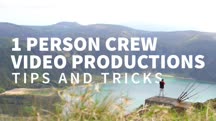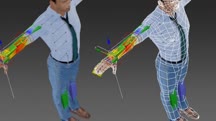Course catalog
Categories
Showing 1-20 of 1,450 items.
.NET Deep Dive: NuGet Package Manager (225825)
Most programming languages have an associated package management system that helps find and install code libraries and their dependencies. For the .NET developer, NuGet is the official package manager. In this course, longtime .NET programmer Walt Ritscher looks at the NuGet integration within Visual Studio and the Visual Studio command line. Walt shows you how to install, update, and remove packages from .NET projects, as well as how to search the public NuGet Gallery and create private repositories for your team. He also details the process of creating and publishing custom packages. If you’re a .NET programmer, understanding the Visual Studio package management system is vital knowledge, so join Walt as he takes a deep dive into the NuGet package manager.
.NET Essentials: LINQ for XML (226148)
The first explanation you typically hear about Microsoft LINQ is that it provides an in-language query tool to manipulate the contents of arrays and lists. Explore LINQ further and you’ll find it works with other popular data sources like XML files. In this course, instructor Walt Ritscher shows you how LINQ to XML uses LINQ extension methods to read, create, search, and manipulate XML in a simplified way. Walt walks you through LINQPad, the lightweight, powerful code editor and code runner that is used in this course, then explains how to load XML into different LINQ classes. He covers how you can get different elements and attributes from XML and some of the ways you can work with elements and attributes, after getting them. Walt describes a variety of query operators that you can use. He concludes with a discussion on how you can create and edit XML structure with LINQ.
1 Person Crew Video Productions: Tips and Tricks (224295)
Join Emmy Award-winning filmmaker Eduardo Angel as he shares field-tested tips and tricks for capturing rich stories and stunning visuals as a one-person crew. Eduardo highlights the advantages and disadvantages of working solo, sharing examples gleaned from his own experiences working around the globe. He provides tips for speeding up your editing workflow, getting the right gear, and tightening up your working routine to get the most out of every day. Plus, Eduardo offers suggestions for getting comfortable in front of the camera, finding fascinating subjects, and more.
Note: Because this is an ongoing series, viewers will not receive a certificate of completion.
Note: Because this is an ongoing series, viewers will not receive a certificate of completion.
10 Mistakes Leaders Should Avoid (215098)
Leaders balance a lot. They manage entire teams, oversee cross-functional tasks, and take on their own work as individual contributors. With all these moving parts, it can be easy to fall victim to small mistakes that snowball into large problems. In this course, leadership development expert Halelly Azulay reviews common mistakes that leaders should avoid to help their teams and themselves to succeed. She describes each error, then explains behaviors and techniques you can use to turn these areas for improvement into team highlights. Halelly first reviews communication blunders that can have a major impact on employee morale and how a leader is perceived. Then she covers mistakes that deal with employee development, performance management, and collaboration. In going over the last four mistakes, Halelly gives you pro tips for leading impactfully and fostering a culture that keeps your team engaged.
This course was created by Madecraft. We are pleased to host this training in our library.

This course was created by Madecraft. We are pleased to host this training in our library.

11 Useful Tips for Regression Analysis (229344)
If you need to sort through information to gain insights or make data-driven decisions, regression analysis is a helpful tool in almost any circumstance. On the most basic level, regression analysis reveals relationships between a dependent variable and a collection of independent variables in a fixed dataset. This is crucial for predicting and forecasting, and also helpful for inferring causal relationships between variables. In this course, Franz Buscha moves beyond the basics, showcasing several prominent tips and tricks that will allow you to not only build better regression models, but also present your results in a more impactful way. Through use of practical examples, Franz covers topics like weighted regressions, polynomial variables, and how to deal with missing data in your regression models.
17 Questions to Help Improve Your Marketing (231010)
Marketing is full of questions. In this course, build effective marketing campaigns at your company by exploring key questions and answers to help conquer your marketing challenges. Find out how to identify the competition, build buyer personas, and define the most important metrics. Brad Batesole shares how to determine your NPS score, set priorities, select pricing, and address privacy concerns. Whether you are an independent marketer, a small business owner, part of an enterprise team, or a solo entrepreneur, the topics that Brad discusses are applicable in helping you navigate digital marketing, B2C, B2B, brand management, and more.
This course was created by Madecraft. We are pleased to host this content in our library.

This course was created by Madecraft. We are pleased to host this content in our library.

2-Minute Tips for Marketing (132597)
Learn great tactics and techniques from top marketing experts with these short, engaging, stand-alone tips. Get useful advice and instruction that you can apply to your work today, including quick tools and platform advice—everything from what Instagram filters are best for business to custom reports for YouTube advertising—as well as important skills like how to keep large and small marketing presentations on track, perform content audits, and marketing with visual storytelling.
20 Habits of Executive Leadership (216866)
There are thousands of books and entire workshops on the high-level strategies of executive leadership. But what about the daily minutiae of leadership? How do you, as an executive leader, balance everything on your shoulders and still stay sane? How do you achieve a balance between quality of life and leading your organization to success? In this course, Aaron Marshall offers 20 manageable and beneficial habits you can build into your life to help you flourish as an executive leader. As the chief operating officer of the Santa Barbara Zoo, Aaron has a long history of managing executive leadership with thoughtfulness and intention. He teaches you habits to keep you grounded and habits to help you stay disciplined, habits for handling your relationships, and habits to become a more discerning thinker. And best of all, these habits can easily be integrated into your life, starting today.
This course was created by Madecraft. We are pleased to host this training in our library.

This course was created by Madecraft. We are pleased to host this training in our library.

20 Questions to Improve Learning at Your Organization (217716)
There is a simple set of questions that can help you improve the learning and development of your employees. In this powerful, short course from Britt Andreatta, PhD, you can learn how to effectively deliver powerful learning experiences by answering these 20 questions. Learn how to understand needs, solve learning problems, and design learning experiences that get results. Britt also shares how to conduct learning events, extend learning to make it really stick, and measure your results.
This course was created by Madecraft. We are pleased to host this training in our library.

This course was created by Madecraft. We are pleased to host this training in our library.

20 Rules for Visual Communication (217189)
How can you communicate information more visually? Instructor Amy Balliett has you covered. In this course, she introduces you to 20 rules that go into the “why,” the “who,” and the “how” of effective visual communication. For example, with Rule 3: Commit to quality, Amy shows you how to determine what makes content high quality and offers you a simple test to determine if your visual content meets or exceeds standards. With Rule 8: Different problems have different solutions, she discusses how to identify the right creative content solution for the problem that you’re trying to address with visual content. Throughout the course, Amy’s rules step through practical strategies and useful details that empower you to revolutionize your own content and brand strategy. Amy also explains which rules can be broken and how to break them.
3D Printing: Short-Run Production (224584)
As an alternative to traditional manufacturing techniques such as injection molding, additive manufacturing becomes an attractive option at quantities as high as thousands of units. It can also function as a backup for making bridge parts before the regular ones are available in a manufacturing plant. This course discusses some of the key advantages of 3D printing, including part number reduction and thus reduced assembly time; increased reliability; backup capability in case of a part shortage; and possibly lower tooling costs. Instructors Rich Cameron and Joan Horvath also review some of the real-world manufacturing use cases where additive is cost effective and suggest which materials (filament, resin, or powder) might make the most sense for your company and product.
3ds Max 2022 Essential Training (210185)
3ds Max is best known for its modeling and rendering tools. These strengths come into play in architecture, manufacturing, game development, industrial design, and motion graphics. There are dozens of features and techniques to master, from modeling and texturing to lighting and rendering. In this course, instructor Aaron F. Ross provides an overview of the entire package, as well as essential skills that 3D artists need to create professional models and animations. Aaron shows you how to get around the 3ds Max interface and customize it to suit your preferences. He describes how to model different objects using splines, polygons, and subdivision surfaces. Aaron explains how to construct hierarchies, add cameras and lights, and animate with keyframes. In closing, he takes an in-depth look at materials and texture mapping, as well as options for rendering engines such as Arnold and Quicksilver.
3ds Max 2022 Quick Start (222867)
Autodesk 3ds Max is a popular and powerful tool used by game developers, visual effects artists, and graphic designers for 3D modeling, animation, and rendering. In this short introductory course, Aaron Ross covers the basics of the 3ds Max interface and core concepts. Aaron shows you how to get around in the program and start modeling, shading, lighting, animating, and rendering. He goes over the interface, creating and transforming objects, applying physically based materials, projecting UVW map coordinates, and more. Whether you're new to 3D or simply new to 3ds Max, this course provides a firm foundation in a short amount of time.
3ds Max and Twinmotion: Architectural Visualization (223054)
Twinmotion is a real-time visualization tool for the AEC and product design world that enables photo-realistic, real-time renders for a variety of platforms. In this course, George Maestri shows the workflow between Twinmotion and 3ds Max for creating architectural visualizations. He starts with the basics of Twinmotion, detailing the interface and setting up preferences, and then shows how to export a project from 3ds Max into Twinmotion. He explains how to add materials and objects, along with details like vegetation. He also covers working with lights, cameras, and weather, before showing how to export the scenes as images, videos, and presentations.
3ds Max to Unreal Engine Workflow and Troubleshooting (226420)
If you have 3D designs that you want to take from 3ds Max and make interactive, you’ve probably already explored using Unreal Engine. In this course, Brian Bradley shows you some potential workflows for transferring assets from 3ds Max into Unreal in as clean and easy a manner as possible, including some of the potential problems and pitfalls that you can run into along the way. Brian first covers the steps you should take in 3ds Max to get your scenes ready for export in a quick and straightforward manner. Then, he gets into how to fix some of the common problems that might arise at different points along the production process. After this course, you’ll be better equipped to transfer your assets smoothly and spend less time moving your files around and more time working in Unreal.
3ds Max: Digital Humans for Architectural Visualizations (223088)
By themselves, architectural visualization projects can seem stale. Adding people to the renderings adds personality and a sense of realism to the images. In this course, George Maestri shows viewers how to work with 2D and 3D assets to add humans to an architectural scene. George steps you through the process of creating and rigging a character in 3ds Max and points you to some online sources where you can choose models for your project. He shows you how to manipulate your model’s structure and texture to change looks. George goes into creating a CAT skeleton for your character and then skinning the character with a 3D mesh. Your character doesn’t have to remain stationary. George walks through how to animate characters using CATMotion or Biped, a tool within 3ds Max.
3ds Max: Physikalische Phänomene simulieren (235685)
Detaillierte Animationen von physikalischen Phänomenen gelingen in 3ds Max am besten mithilfe von MassFX. In diesem Kurs zeigt Ihnen Bob Weber anhand anschaulicher Praxisbeispiele, wie Sie mit dem Plug-in schnell und sicher zum Ziel kommen.
8 Things You Must Know in Python (213398)
There are many beginner Python tutorials, but to build useful applications, you need to move beyond the basics. This course helps you on the journey to writing intermediate-level Python code. Instructor Jonathan Fernandes presents eight things that you should know how to do in Python. Topics include the Python any() and all() methods, using enumerate() and zip() methods, min() and max(), and more. For each topic, Jonathan provides a hands-on approach and then gives you a challenge (with solutions) to practice.
Note: This course was created by Jonathan Fernandes. We are pleased to host this training in our library.
Note: This course was created by Jonathan Fernandes. We are pleased to host this training in our library.
A Manager's Guide to Inclusive Teams (216407)
In today’s business environment, in order to compete, it's critical to have inclusive and diverse teams. Therefore, as managers, creating inclusive teams is necessary to your success. In this course from inclusion expert Lia Garvin, learn how you can build effective and inclusive teams. Lia shows that every team member has a role, and how each role can work together to bring value. She shares how access is so important to help make decisions and give people information, and explains the importance of establishing psychological safety on your teams so that team members feel comfortable taking risks. By following Lia’s training, you'll learn how to unlock the potential of your team and help them connect with their purpose.
This course was created by Madecraft. We are pleased to host this training in our library.

This course was created by Madecraft. We are pleased to host this training in our library.

A Strengths-Based Approach to Managing Your Team (232319)
Maximize your team’s performance and develop your employees by using a strengths-based approach. Join instructor Jessica Mund to discover how to identify your strengths and those of each team member, summarize all of those advantages in a mapping, and then leverage those strengths to benefit the team and the business. Learn how to develop a team strengths plan, run a team strengths meeting, and align the team with a follow-through plan, helping employees translate their skills into performance-increasing actions. See how thinking about strengths and helping the team recognize each other's strengths can resolve conflicts. Find out how to make individualized plans and use the team strengths map to assign peer coaches, build task forces, and develop project teams. Explore how to establish and track benchmarks that showcase the team's improved performance.



















